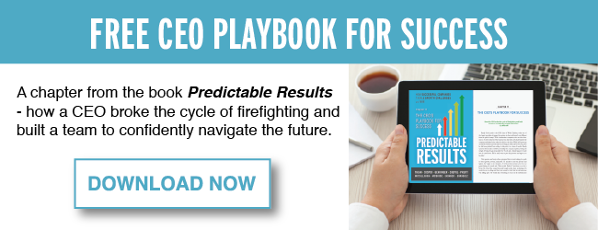I recently had a CEO share with me that he “thinks” everything is fine in his company. After all, he said,  “We know what we know!” In his world, spreadsheets were the name of the game. Yet, there’s a problem brewing at his company: people are realizing how easily key details or metrics get buried. If no one sees the information, then it’s an “out-of-sight/out-of-mind” corporate mentality. But, this mentality serves only the self-serving leader; it doesn’t serve the company very well at all. Yet, we like our spreadsheets. We know how to use them (at least some of us know), and we like what we know, so why change?
“We know what we know!” In his world, spreadsheets were the name of the game. Yet, there’s a problem brewing at his company: people are realizing how easily key details or metrics get buried. If no one sees the information, then it’s an “out-of-sight/out-of-mind” corporate mentality. But, this mentality serves only the self-serving leader; it doesn’t serve the company very well at all. Yet, we like our spreadsheets. We know how to use them (at least some of us know), and we like what we know, so why change?
If you want to grow a viable company, though, you need to check yourself and your leadership team. Are you relying on “yesteryear thinking?” If so, how do you know? Here’s a quick glance at how you might recognize old-time thinking.
1. You still use a ton of spreadsheets or Word documents to track your most important metrics.
- Of course, you use spreadsheets or Word documents for some things. But when you’re swimming in them, you just keep sinking deeper and deeper. Spreadsheets can get so big and bulky, or you have so many of them, that you can’t possibly find key pieces of information you need.
- Spreadsheets and Word documents are fine places to keep numbers from the past, etc., but a spreadsheet has yet to produce an innovative idea about the future.
- It’s easy to bury a ‘bad’ number in all the piles and piles of a grandiose spreadsheet. “Nobody will ever know!”
- They limit your company’s ability to be agile.
- They suffer from “user influence.” Different people have different ways of entering information on spreadsheets. Therefore, they can easily become “personalized” documents that succumb to individual preferences. They become highly individualized user developed applications, which causes a new person to have to start all over (because s/he doesn’t understand the method or the thinking behind the person that had previously been inserting the data).
- You really do begin to think that spreadsheets predict the future.
- You use technology for daily work, but you don’t maximize its use for the strategic components of your business.
- The Rhythm Dashboard, for instance, is designed to help keep your team focused, aligned, and talking about what’s most important relative to where your organization wants to go.
- Without focus and alignment, you can’t create openness and transparency.
- It’s difficult for people to have a direct line of sight to what’s strategically most important.
- Spreadsheets and Word documents will scatter your people’s thinking. When thinking is scattered, there isn’t a healthy transparency around your Annual Goals and/or Targets, your Quarterly Priorities, who’s accountable for what, etc.
- You can’t build collaborative, high performance teams if people don’t have a single, simple repository for viewing strategic priorities.
- Your people won’t know how the component parts of what they’re doing impacts the bigger whole.
- Information is not cascaded down throughout your organization.
- Ideas rarely, if ever, come from front-line employees.
- Micro-management rules, which hinders open expression of thought.
- You need to gather data to make decisions, to look at trends, etc. But if you’re still making the bulk of business decisions based solely on what the data tells you, then you’re reactive vs. proactive because you miss the conversation.
- You’re too busy to discuss much, so you let the numbers dictate your decisions. Without healthy levels of dialogue, though, you miss root causes and possible solutions. Creativity is virtually null and void.
- You don’t talk about results, good and bad, and there’s so much to learn from results. Therefore, you only trick yourself into thinking you’ve had a strategic discussion about something.
- Collective intelligence comes from varying perspectives and interpretations of what the numbers mean within a given context. Without dialogue, you can’t leverage the collective intelligence of your people.
- Your company’s leadership mentality, then, is one of “You work for me.” Or “You do as I say.” Or “I’m the boss.”
- Your leadership culture is very adult-child oriented vs. adult to adult oriented.
- As a result of transactional leadership, your company has a built-in aversion to risk.
- Your people are not engaged.
- You mistake physical presence for productivity every…single…day.
- You don’t measure people on their actual results; you measure them based on how hard they seem to be working.
- There may be the semblance of longer-term and nearer-term Visions for where the company is headed, but these Visions aren’t alive and well. No one really can share what the company wants to be when it grows up, much less the key Winning Moves identified for getting there. The “Vision” thing is a checklist item; it isn’t something that motivates or inspires. It might be there, but there’s little to no energy around it.
- If fire-fighting is at your core, then you’re not getting to root causes.
- Chaos tends to rule, even though it’s nicely disguised (many times) as productivity (because people appear to be busy!).
- Most things are rigid vs. fluid (i.e., annual reviews are done because HR says they need to be done vs. them being seen as a welcomed opportunity for meaningful connection).
And this brings us back to spreadsheets. Yesteryear thinking is a celebration of “lists” and “to do’s” and “tasks” that are either sitting on someone’s desk or buried in a massive spreadsheet. Almost without noticing it, you’re celebrating mediocrity vs. excellence.
While changing the way you run your company can be a bit disruptive, that doesn’t mean it shouldn’t be done. In fact, you’ll know you’re making progress in stretching the way people think when you hear some grumbling about having to do something differently. So consider using a tool such as the Rhythm Dashboard to get away from digging through spreadsheets just to see how something you strategically identified as important is doing. Create a culture of transparency by talking about what’s going well and what’s not going well. Hold yourself and your leaders accountable for creating meaningful connections with their people. Cascade your Annual Plan and get ideas from your employees for solutions, process improvements, new ideas and concepts, etc.
It’s amazing what focus, alignment, and transparency can do to raise the level of thinking within your company.
Photo Credit: iStock by Getty Images
Photo Credit: iStock by Getty Images



 LinkedIn
LinkedIn
 Facebook
Facebook

